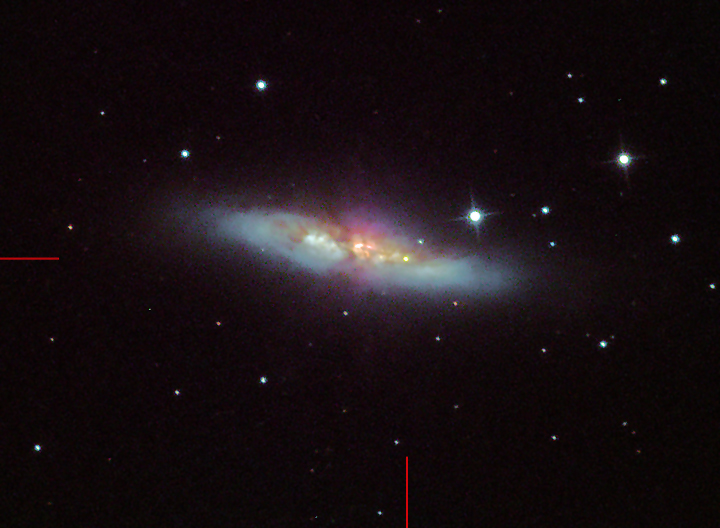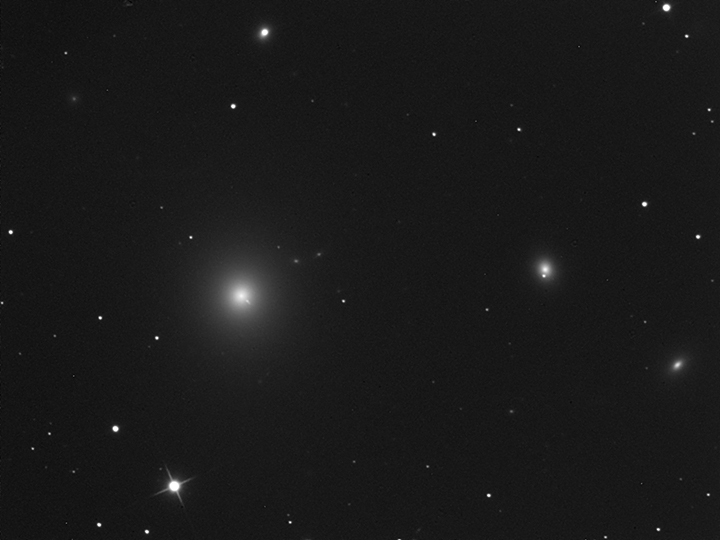4/10/2014. Two galaxies: catching up with SN 2014J and a reality check on Roland Christen's photo of the M87 jet. I've been going after bright targets under the bright Moon.

M82, SN 2014J marked
6x300s L, 4x300s RGB (1h 30m total)
Last night, I shot M82 to check on SN 2014J and found excellent seeing (for here: 2.7" PSFs). This gave me high hopes for a decent image of M87's jet (inspired by a photo Roland Christen posted a few nights back) but I saw little return on my trouble -- it's there (the short streak at the 4 o'clock position in the image below), but for some reason resolution at that time in that part of the sky was lousy. The seeing is at least twice as good as the previous night, but still... Ninety minutes of RGB hints that color will serve the subject well, but I need a better luminance frame for a base. Maybe I should try a very tall stack of very short subframes; the visible aspect of the relativistic jet coming off the multi-billion solar mass black hole in M87's core shows up in 30 seconds. Don't be reluctant to shoot it in bright skies or as a casual target with short exposures when the seeing seems promising.

M87
7x300s L (35m)
4/11/2014. Housekeeping, loose ends, etc. Tweaking collimation. Cleaning optics. I dumped the years-old weatherstripping I taped in place to hold the cap on the R-C and replaced it with self-stick Velcro (~2 inches in one spot, 3/4 inches in two others). Press the cap on in one orientation and it's loosely held by friction; align the velcro and it's on good and tight.
I shot NGC 2158 for its own sake and to give CCDInspector a rich field for analysis. It showed that collimation is now very, very good and tilt is negligible. So why aren't my images tightening up any better than they are? The last several of all-night image sequences are especially, consistently, unaccountably awful. This morning, I hurried out to check the 'scope early. The primary mirror seemed much cloudier than I expected, much worse than it looks by day; perhaps surface muck is exacerbating the otherwise mild effects of dew. That's what it looked like, so I cleaned the primary and we'll see what happens next.
Charging the batteries in the mobile observatory (aka, the thing, the RV, etc), spritzing Fabreeze around the interior, topping off the tires, exercizing the generator, replacing the AAA's in the thermostat, fixing up the side mirrors -- you'd think I might have plans for it. Which I do, but not immediately.